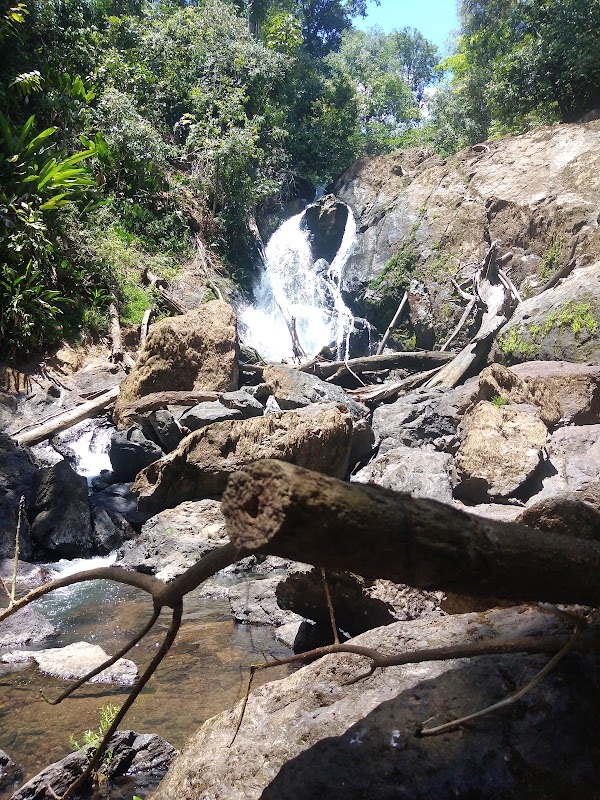Hidden Waterfalls and Wildlife Trails Around Puerto Jiménez: Your Off-Grid Adventure Guide
Escape the tourist crowds and explore off-the-grid waterfalls and wildlife trails near Puerto Jiménez. This guide offers clear routes, trail conditions, and useful tips for hikers eager to experience the rainforest’s raw energy and hidden natural wonders.
Start Early to Avoid Heat and Rain
Begin hikes before 9 AM to enjoy cooler temperatures and reduce the risk of afternoon rain showers common in the rainy season.
Use Waterproof, Grippy Footwear
Trails near waterfalls can be slippery and muddy; waterproof hiking boots or shoes with good traction are crucial for safety and comfort.
Carry at Least 2 Liters of Water
High humidity and strenuous terrain demand ample hydration—bring enough water to stay refreshed throughout your hike.
Apply Insect Repellent Before Your Trek
Dense tropical forests host plenty of insects, so insect repellent will improve your comfort and protect against bites.
Hidden Waterfalls and Wildlife Trails Around Puerto Jiménez: Your Off-Grid Adventure Guide
Puerto Jiménez, located on the Osa Peninsula of Costa Rica, is your gateway to wild, less-traveled waterfalls and wildlife trails where the forest pulses with raw energy. Forget the crowds—here, the rainforests and rivers dare you to step beyond well-trod paths and discover nature fiercely itself. From the refreshing splash of secluded waterfalls to winding trails through dense jungle alive with bird song and tiny creatures, these routes bring adventure with a practical edge.
Start with the El Tigre Waterfall Trail, a 4.5 km loop with a moderate 250 m elevation gain. The path snakes along the Tigre River, which pushes forward stubbornly over mossy boulders. The trail’s dirt and rock terrain reward you with crisp views of cascading watershead twenty meters high. Along the way, keep your eyes on tropical birds like the keel-billed toucan, whose colorful presence punctuates the green canopy. Arrive mid-morning to catch the best light filtering through the dense foliage.
Another excellent route is the Río Claro Trail, a 6 km out-and-back with gentle ups and downs over damp earth and root-strewn paths. The river here whispers challenges, rushing under fallen logs and daring you to move carefully. About 1.5 km in, the waterfall comes into view—a hidden ribbon of cool water spilling into a natural pool where you can rest and even take a dip if you're prepared. The air hums with cicadas and the calls of howler monkeys, making pause a necessity.
For a longer outing, the Corcovado Fatala Trail pushes 10 km one-way with challenging elevation changes. This rugged trail requires solid boots and stamina but delivers sweeping vistas over the Pacific and lush valleys blanketed in wildlife. Early starts are essential to avoid afternoon downpours that the rainy season brings.
Preparation matters here. Hydration is critical as humidity can deplete energy fast. Supportive, waterproof footwear will protect against slippery rocks and muddy paths. Timing your hikes to start early or late afternoon avoids midday heat and gives wildlife encounters a higher chance. And don’t forget insect repellent—rainforest insects are relentless.
These trails and waterfalls don’t just invite exploration; they demand respect, asking you to read their moods and rhythms. Engage with the forest’s pulse and move with attention—here, adventure isn’t conquering, but a dialogue with a fiercely alive environment.
By mapping out these paths and practical tips, this guide equips you to experience Puerto Jiménez’s wild side without the guesswork. In this mix of challenge, beauty, and practicality, you’ll find the spirit of true exploration.
Nearby Trips
All Adventures
Boat Charters
Water Activities
Adventures near Puerto Jiménez
Discover the unique and memorable adventures that make Puerto Jiménez special.
Frequently Asked Questions
Are the trails safe during the rainy season?
While generally safe, trails become slippery and river crossings more challenging during heavy rains. Proper footwear and caution are essential, especially after storms.
What kind of wildlife can I expect to see on these trails?
Birds like toucans and parrots, howler monkeys, iguanas, and a wide variety of insects thrive here. Early morning and late afternoon increase wildlife visibility.
Is swimming allowed at the waterfalls?
At most waterfalls like Río Claro’s pool, swimming is permitted but always assess water currents and depth before entering. Some spots may be unsafe after heavy rains.
Can I visit these trails without a guide?
While many trails are marked, hiring a local guide is recommended for deeper knowledge, safety, and spotting elusive wildlife along the route.
Are there facilities or resting spots along the trails?
Facilities are limited; some trails have basic rest areas near waterfalls but bring your own food and water to stay comfortable.
How can I minimize my impact on these natural areas?
Stick to established paths, carry out all trash, avoid disturbing wildlife, and use biodegradable products. Respecting the environment ensures these trails remain pristine.
Recommended Gear
Waterproof Hiking Boots
Protects feet from wet and slippery paths common near waterfalls and river crossings.
Lightweight Rain Jacket
Keeps you dry during sudden rain showers that refresh the forest but soak unprepared hikers.
Insect Repellent
Necessary year-round to prevent bites from mosquitoes and other jungle insects.
Hydration Pack or Water Bottles
Ensures steady hydration amid humid conditions that accelerate dehydration.
Local Insights
Hidden Gems
- "The small, rarely visited salt lick near El Tigre trail attracts tapirs at dawn."
- "A rock ledge above the Río Claro waterfall provides a quiet overlook often missed by hikers."
Wildlife
- "Jaguarundi cats roam these forests but stay hidden; listen for their chirping calls."
- "Green macaws frequently fly overhead in pairs, a spectacular sight during migration."
History
"The Osa Peninsula’s indigenous peoples once traversed these paths for hunting and gathering, and some trails follow ancient routes that link current exploration to a deep cultural past."

